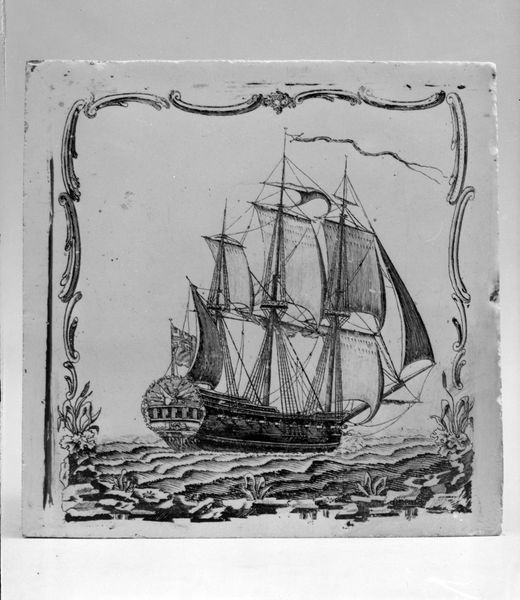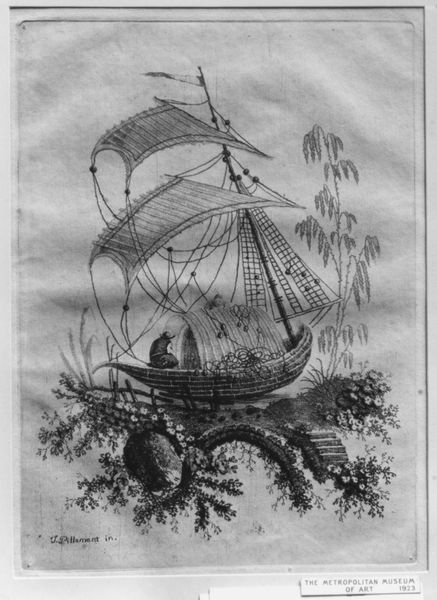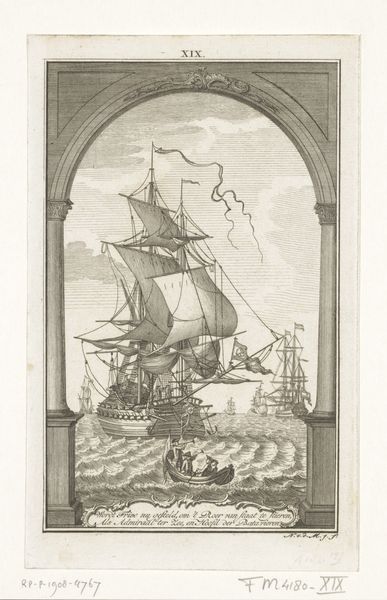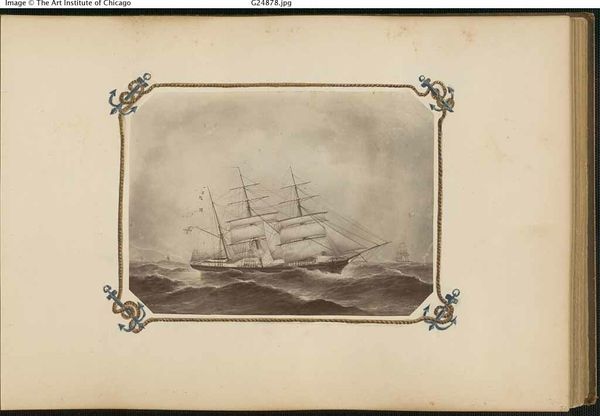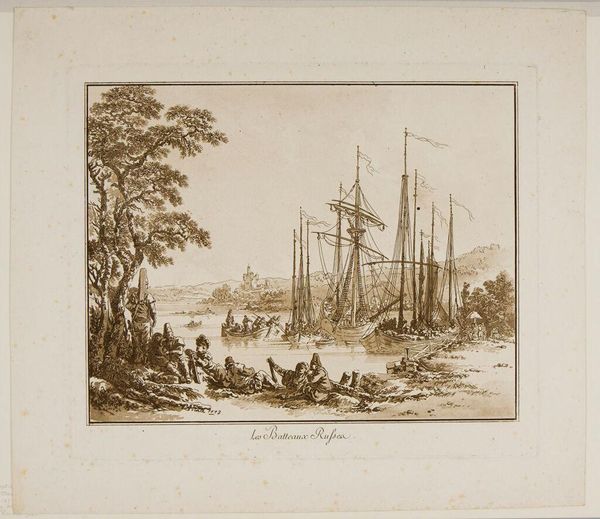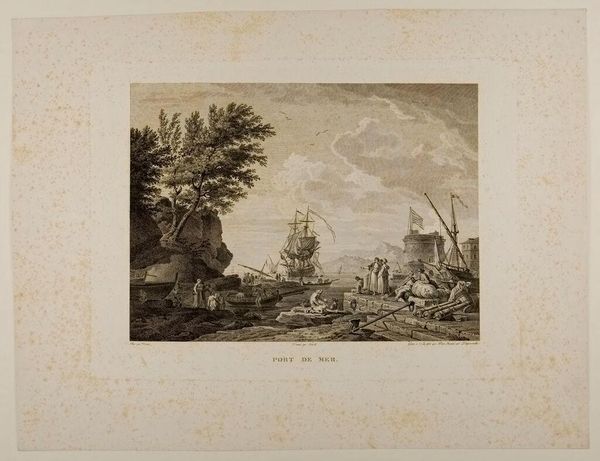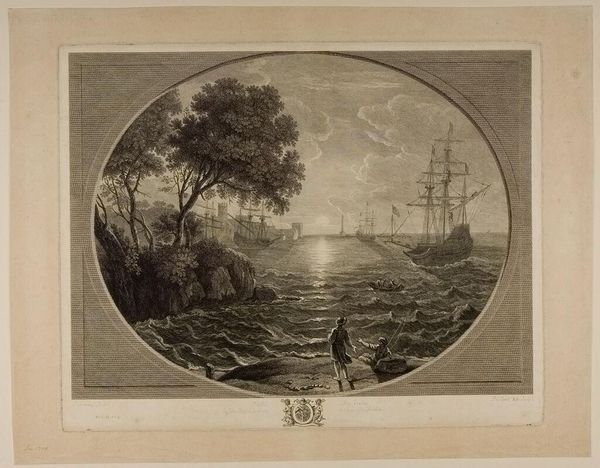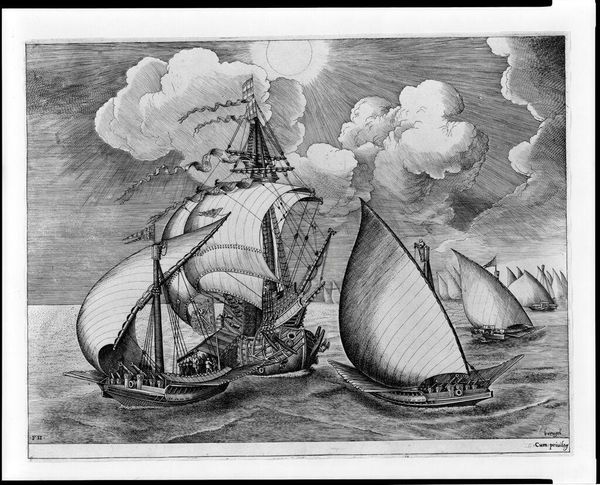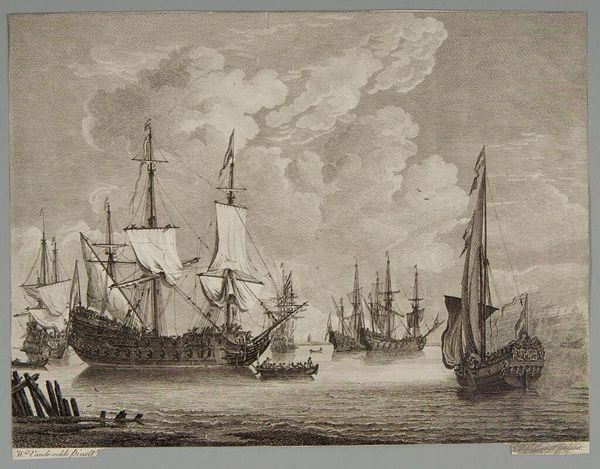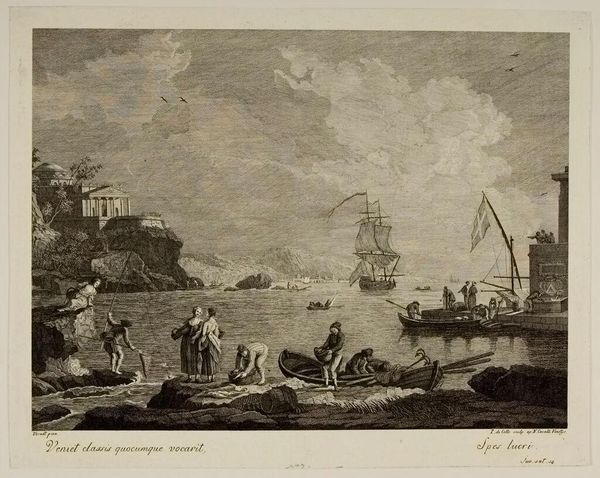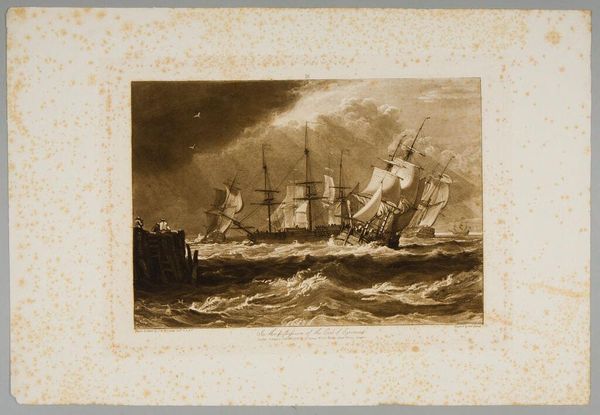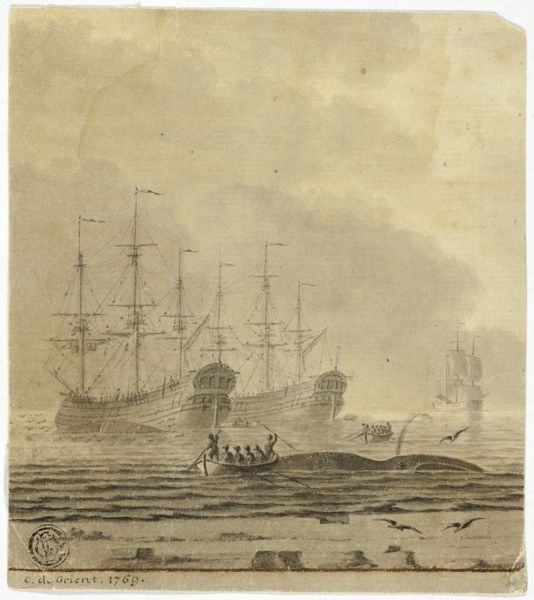
print, etching, ceramic
#
ship
# print
#
etching
#
landscape
#
ceramic
#
england
#
genre-painting
Dimensions: 5 x 5 in. (12.7 x 12.7 cm)
Copyright: Public Domain
Curator: This is a transfer-printed tile, likely made between 1757 and 1761. The print itself, an etching, is attributed to John Sadler in England. The medium is ceramic and shows a landscape of ships at sea. What are your first thoughts? Editor: Immediately, I'm struck by its seeming neutrality, but it belies the realities of maritime activity at that time. It is like looking at a theatre set - idyllic in composition, yet hinting at deeper, less savory implications relating to colonial trade and its consequences. Curator: Exactly. The printed image would have been transferred onto the bisque-fired ceramic, which speaks to the industrial production methods of the mid-18th century. Sadler's print production suggests a deliberate streamlining of artistic labor. The rise of transfer printing democratized imagery, making art accessible and transforming decorative objects into mass-produced commodities. Editor: It reminds us that consumption during this era had embedded within it complex power dynamics, even within an apparently mundane household object. To decorate one's home with an image of ships implies engagement—if not necessarily explicit support—with England’s burgeoning maritime economy that transported goods as well as enslaved people. Curator: Note the Rococo-inspired, almost fantastical frame around the maritime scene—shells, grottoes, and foliage create a world of maritime prosperity. It gives a sense of established trade routes. The technique relies heavily on line work, demonstrating skilled craftsmanship to achieve precise detail. Editor: That stylized frame is key. It softens what would otherwise be quite stark. By integrating the scene into an aesthetic that favored lightness and beauty, the tile repackages commerce within the language of the elite, erasing the actual experiences connected to the vessels out at sea. It is about selling a sanitized view of an expanding empire. Curator: Right. Thinking about process and intention here provides a valuable understanding of production and how cultural and artistic production becomes increasingly tied to larger economic and socio-political systems. Editor: Indeed. It shows how an object—seemingly so ordinary—can contain multilayered, and at times unsettling, colonial histories.
Comments
No comments
Be the first to comment and join the conversation on the ultimate creative platform.
